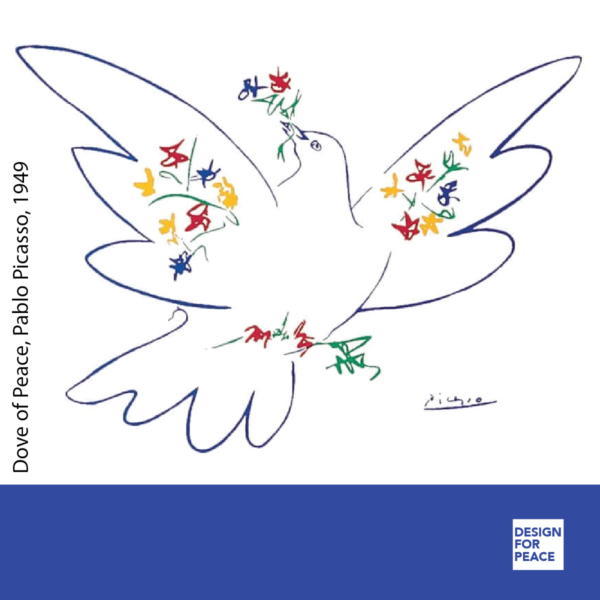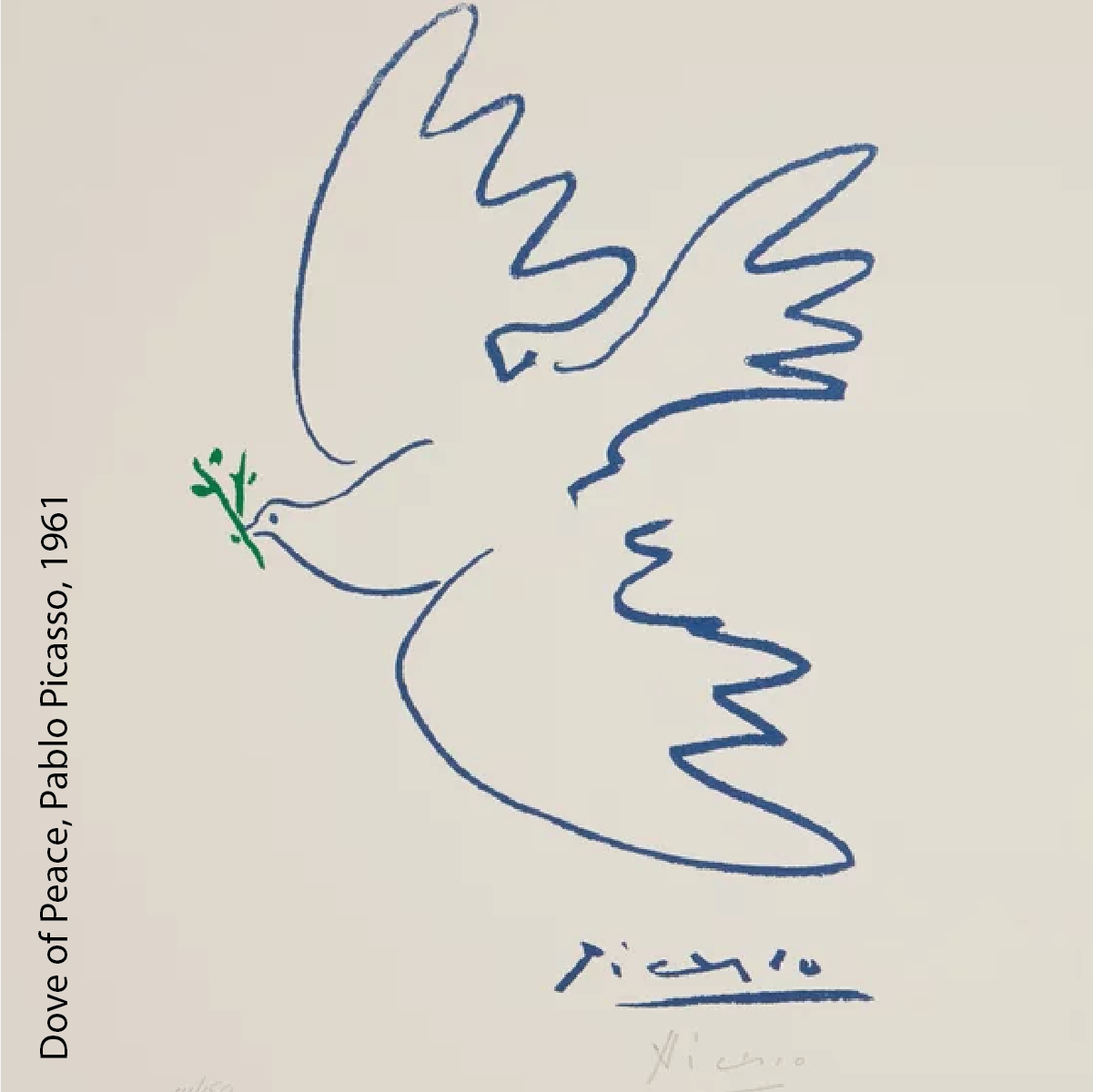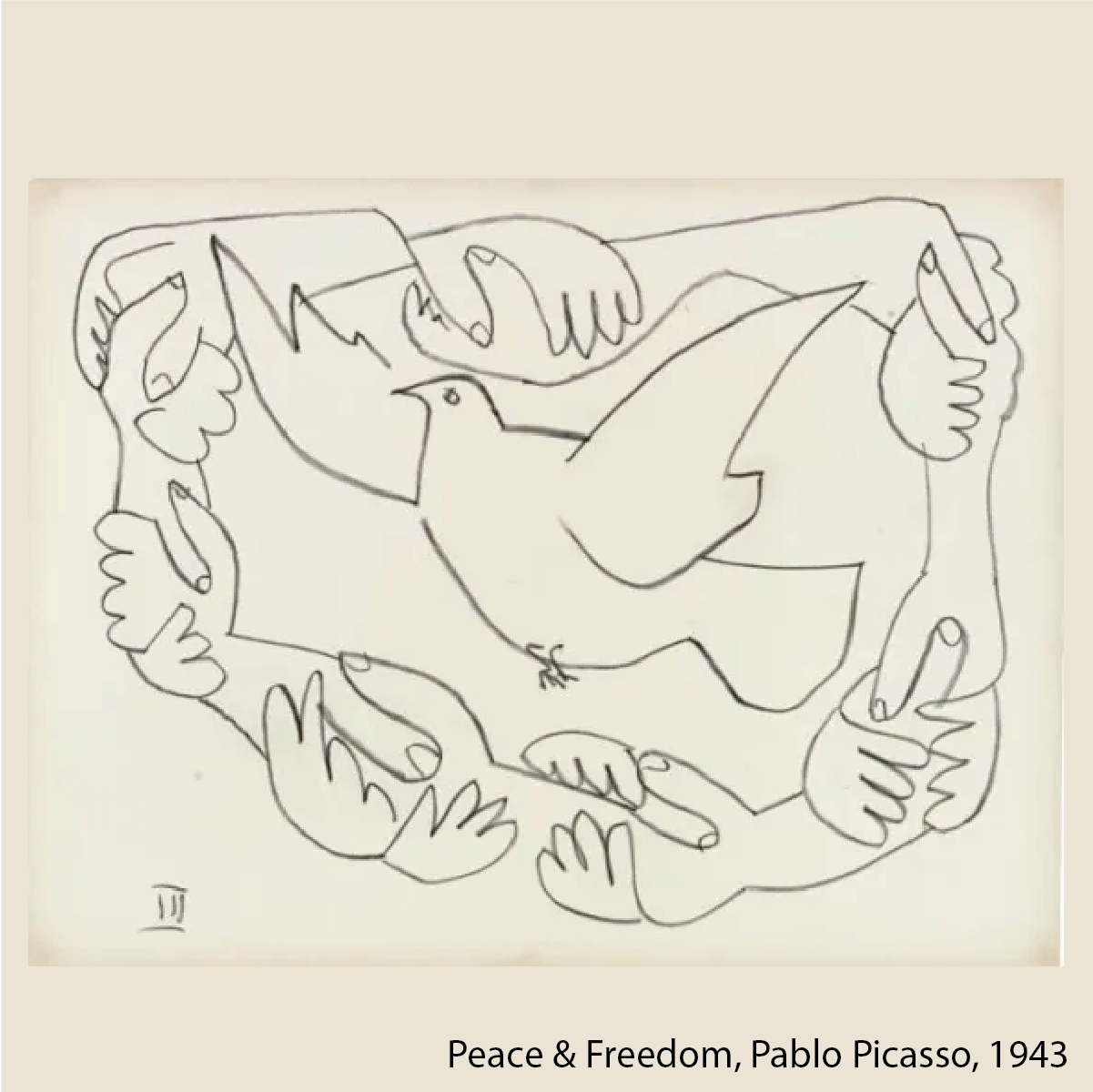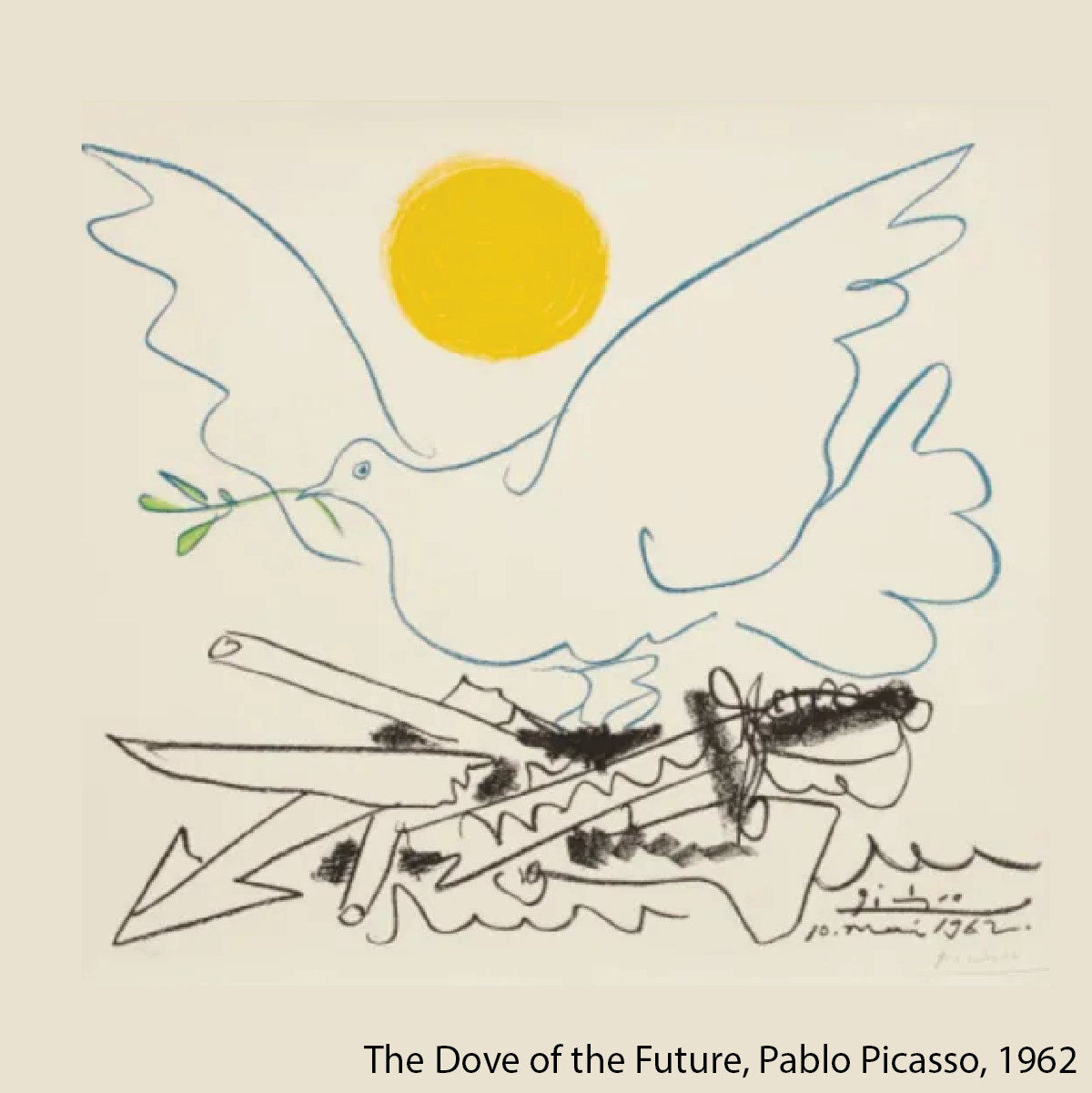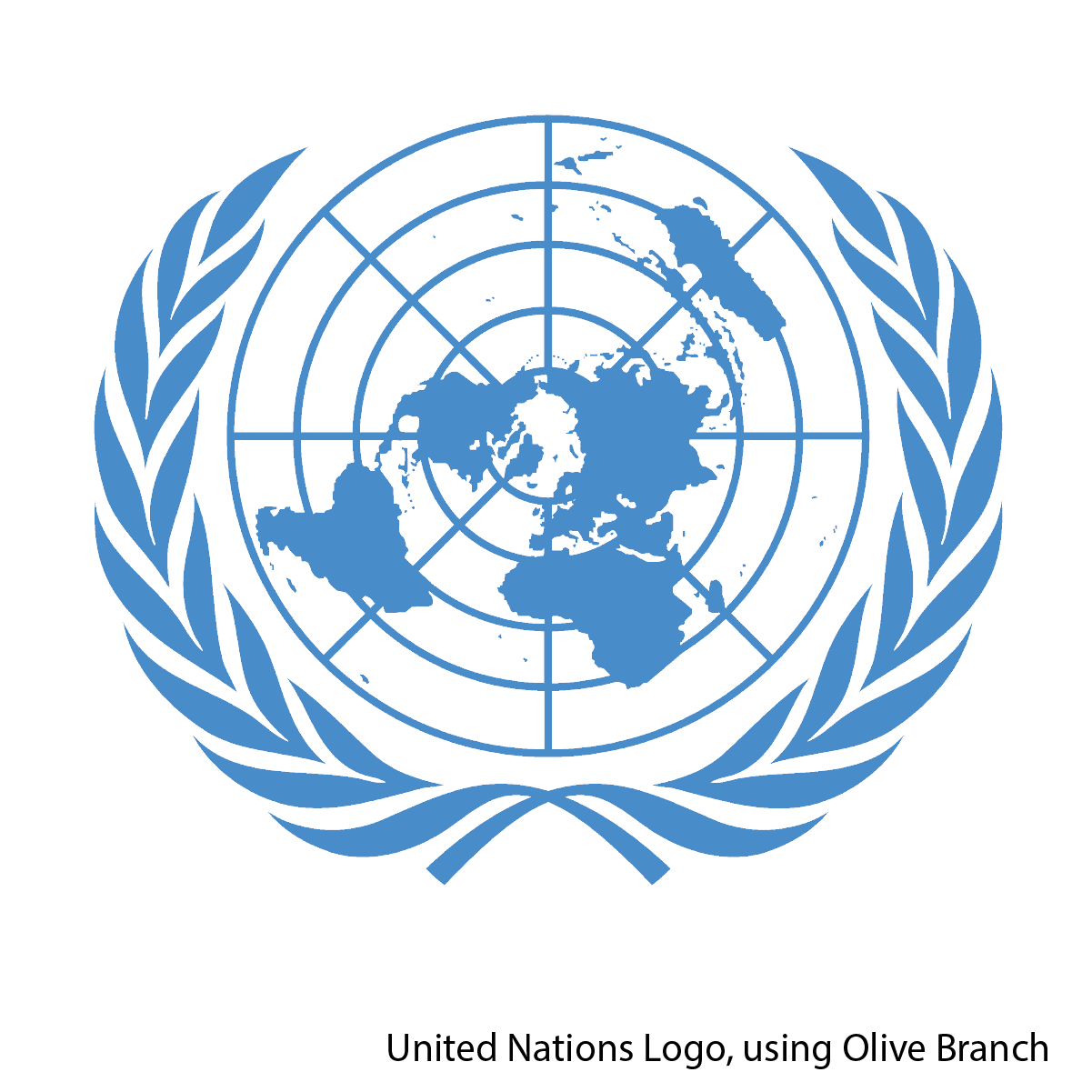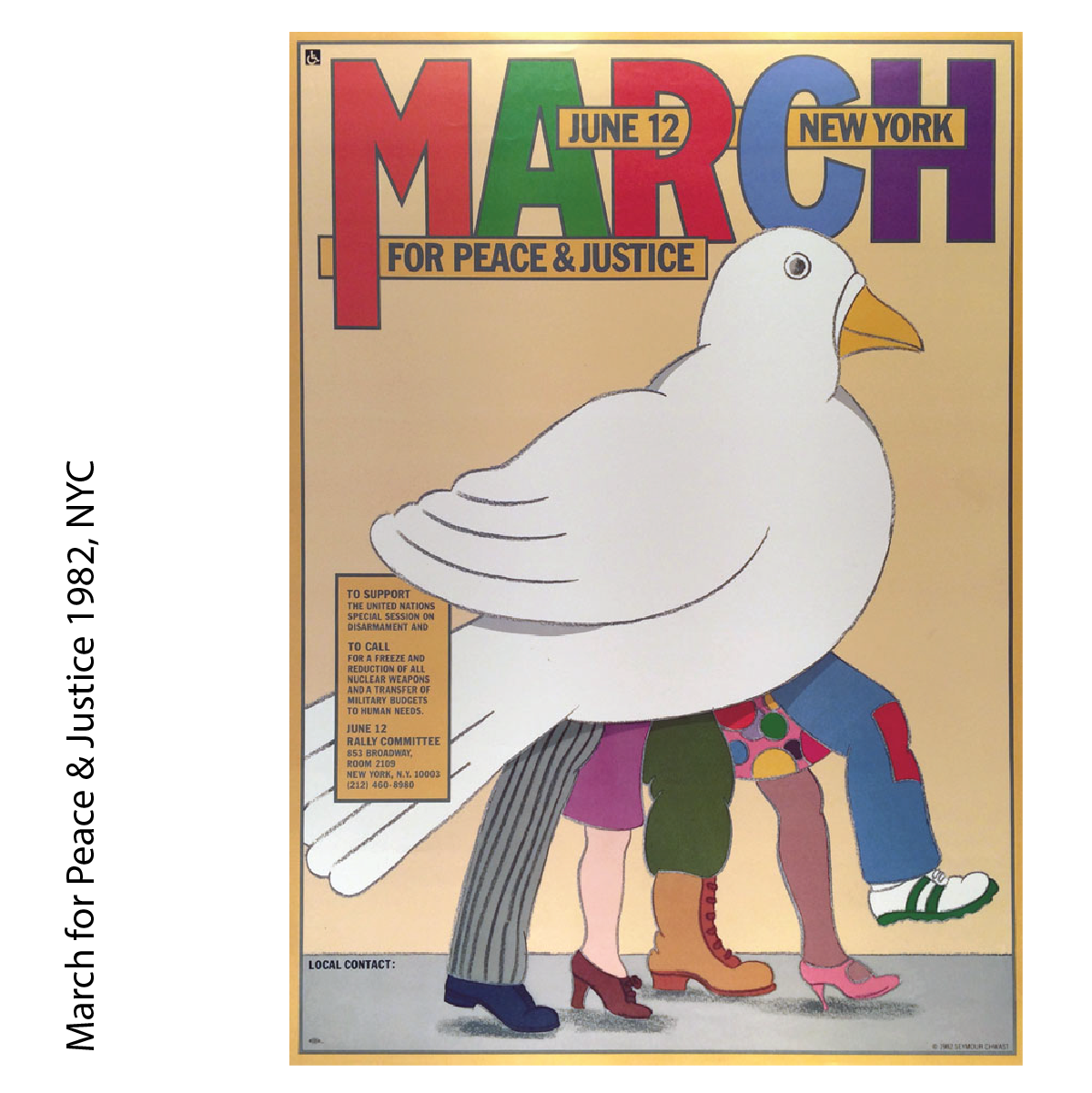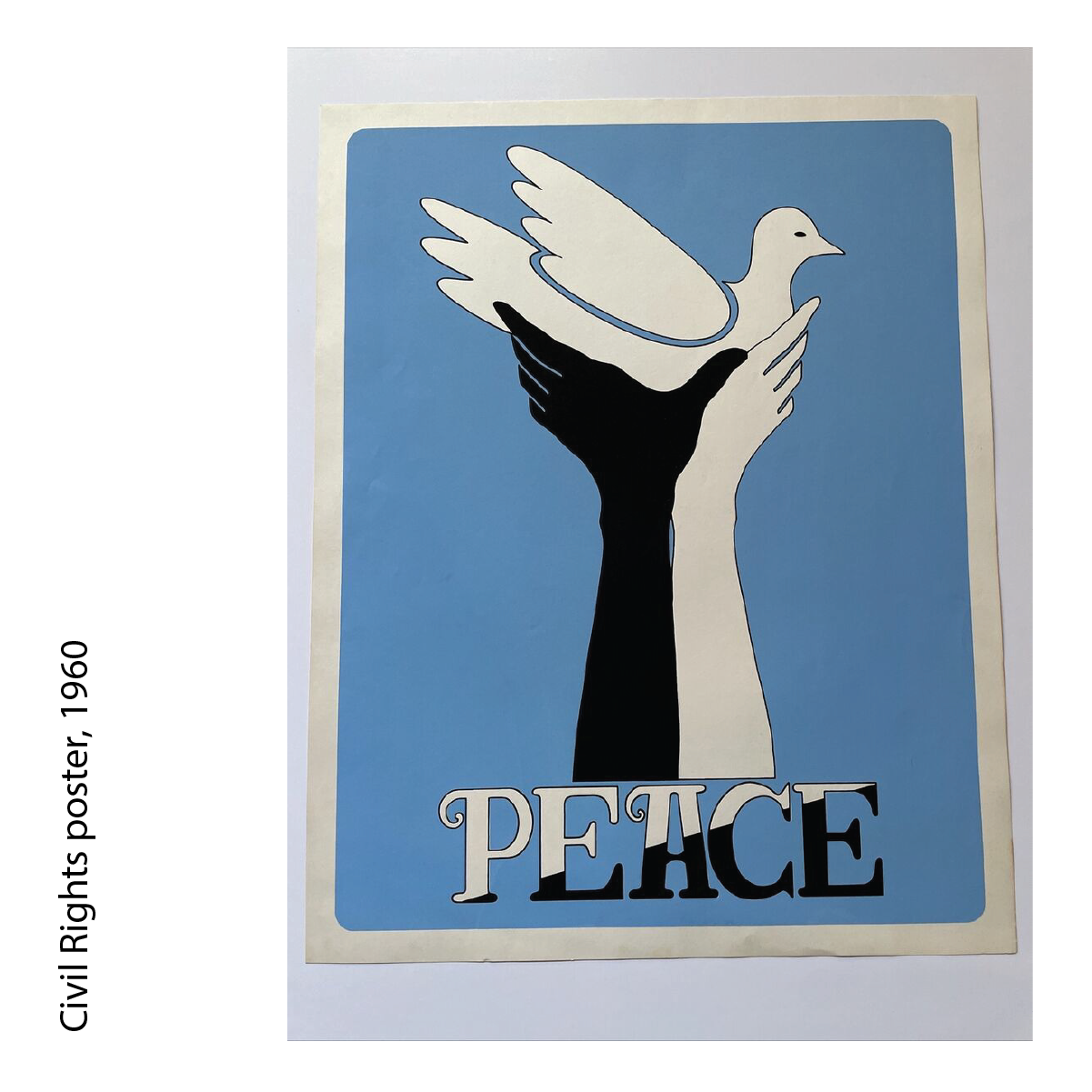The Dove & the Olive Branch: Innocence and the Pursuit of Universal Peace
Symbols have a remarkable ability to transcend language barriers, embedding deep-seated meanings into simple shapes and colours. Among some of the most universally recognized symbols are those that represent peace. From ancient times to the modern era, peace symbols have served as emblems of hope, unity, and resilience in the face of conflict.
The association of the dove with peace has deep historical, religious, and cultural roots that have evolved over time. From the biblical story of Noah’s Ark, to ancient Greek and Roman mythology, the dove’s journey to becoming a peace symbol was further popularized in modern times through art and activism.
The dove, often depicted with an olive branch, first became an iconic peace symbol after the artist Pablo Picasso used it for the World Peace Congress in 1949 [Image 1]. While doves were already associated with innocence and love, Picasso’s famous ‘Dove of Peace’ solidified its role in modern culture as a universal symbol of peace.
Although the dove became iconic through anti-war imagery, most notably during the Cold War and Vietnam War eras, it also represents broader, non-violent values like love, innocence, and hope. As a creature of flight, it symbolizes freedom and transcendence, embodying the dream of a peaceful world that isn’t merely free from conflict but also abundant with unity, compassion, and acceptance.
Alongside, another one of the oldest symbols associated with peace is the olive branch, a motif that originated in ancient Greece. Traditionally, olive branches represented victory and wisdom, often associated with the goddess Athena. As early as the 5th century BCE, the olive branch began symbolizing peace as well, particularly in depictions of ceasefires and the end of conflicts.
In modern design, the olive branch continues to be a powerful emblem, often represented with soft, organic lines and earthy colours to evoke feelings of calm and tranquillity. Its simplicity lends itself well to logos, posters, and illustrations that call for peace, reflecting both historical roots and a connection to nature.
In graphic design today, the dove and the olive branch, in combination or on its own, often appears in logos [Image 5] or posters [Image 6,7,8] that promote human rights, kindness, and social justice. This shows that peace is more than a truce; it’s a proactive force that unites diverse people and ideals toward a common good.
By broadening our understanding of these symbols, we allow the message of peace to be more inclusive and comprehensive. Whether through colours, shapes, or compositions, modern design needs to start to speaking to this expanded idea of peace, one that encourages empathy, inclusivity, and respect for the earth and all its inhabitants.
___________________
Image 1 – Dove of Peace, Pablo Picasso, 1949
Image 2 – Dove of Peace, Pablo Picasso, 1961
Image 3 – Peace & Freedom, Pablo Picasso, 1943
Image 4 – The Dove of the Future, Pablo Picasso, 1962
Image 5 – United Nations Logo, using Olive Branch
Image 6 – United Nations Stamp design – 2006
Image 7 – March for Peace & Justice 1982, NYC
Image 8 – Civil Rights poster, 1960

